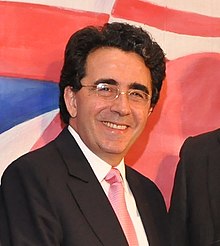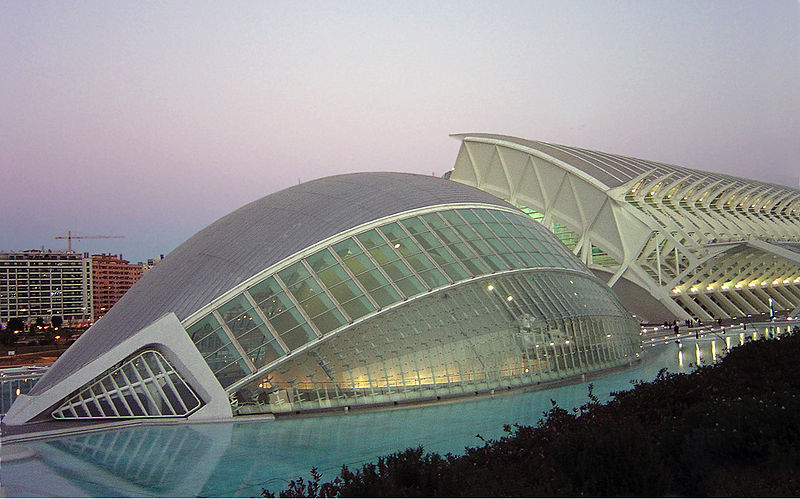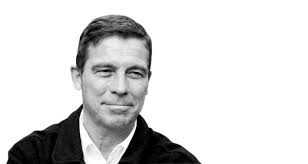
For the first part of the activity, the architect I’ve chosen is a well-known person in the world of architecture. He is Santiago Calatrava and he was born in 28 July 1951 in a small district of Valencia, the city where he develop one of his most espectacular projects on the “Ciutat de les Arts y les Ciencies”. He is not just an architect but also structural engineer, sculptor and painter as well.
Calatrava doesn’t describe himself as a follower of any movement but critics may have influenced him in some works. The journal of the American Institute of Architects also talked about him some years ago, and in the article published he talks about his architectural standpoint and sensibility creativeness that compose his essence.
His works are inspired on a Swiss engineer Robert Maillart ,so from there he start using simple forms which could create an emotional response on people. Basing on his works he also started a book which is called: “My major interest is the introduction of a new formal vocabulary, composed of forms adapted to our time”. He talks there about the relationship between sculpture and architecture as well in which he was really interested among his career.
There’s a quote of him that really shocked me, it said:
“I’m always looking for more light and space”
Santiago Calatrava
There is reflected the need of creating and imagining of an architect. Calatrava was fidgety and restless so his necessity of designing grew up with him. This quote makes a kind of resume about Calatrava’s live; every free space he look at, he starts thinking and creating the way to fill it up. So this words also makes me think over what an architect needs to be an architect, seems senseless but it is not. Should an architect have the capacity of imagining projects wherever he goes? Does an architect need to take in account light and space when setting out a project? Of course the answers may seem clear but all these ideas are related to the architect’s personality which is created by their own. So, as personality is not learned at any class or lesson those critical decisions are finally took by themselves. And why am I telling this; because this makes the quote appear again. Considering that the search for light and space, as the quote says, should form part of the personality of the architect as some ones may just work then there’s a project in between.

BIBLIOGRAPHY:
WikiArquitectuta-Satiago Calatrava
I want to be an architect!
-Now moving into the text of “Quiero ser arquitecto” from Alberto Campos Baeza, I have to mention that it has surprised me pleasurably.
The text starts by giving the lector a comparison between two situation which certainly have points in common. Climbing stairs two at a time is the main situation explained, he said that climbing stairs this way is posible, as is posible to learn architecture by putting effort on it as well; but is highlights that is not posible to do it all the way around, that means you can’t build a project the night before the deathline. So, what a fenomenal reflexion he does here. Architecture is not a difficult career but one in which you need to work all days.
To be an architect is to be an artist, a technician, a creator, or even a constructor but what is more important is to domine light and space as Calatrava said before.
Alberto gives as some tips to prepare us to this career which I think are useful: read, draw, take pictures… From my point of view, architecture is a creative degree but also analytical. Everything should be taken in account.
After reading this short book I realized that architecture is related with other disciplines as literature or poesy. I’m in love with poesy so long time ago I started to read prose. To be sincere, it has always been easy to me letters than numbers, but I feel now in some way they are both related on architecture as as the text says poesy becomes important in architecture.
Another topic touched in the text and I should like to talk about is the future an architect has. It can be thought that it is obvious like the way you are going to work, but what people do not know (I didn’t know it 10 minutes ago) is that architecture opens you lots of doors which creates kind of a communication between few disciplines in which an architect can have part.
To sum up all this information, with this lecture I realized that architecture is the career I want to course and that a lot of effort is required; so many hours of dedication designing projects and so on. I hope one day I could write an article or maybe a book as this one which encourages people to find their way among architecture which I could say is the nicest career ever at least until now. (Surely on the future it is as well).



